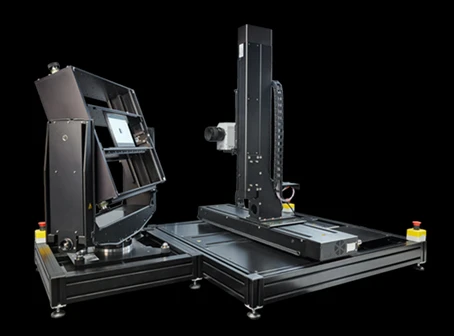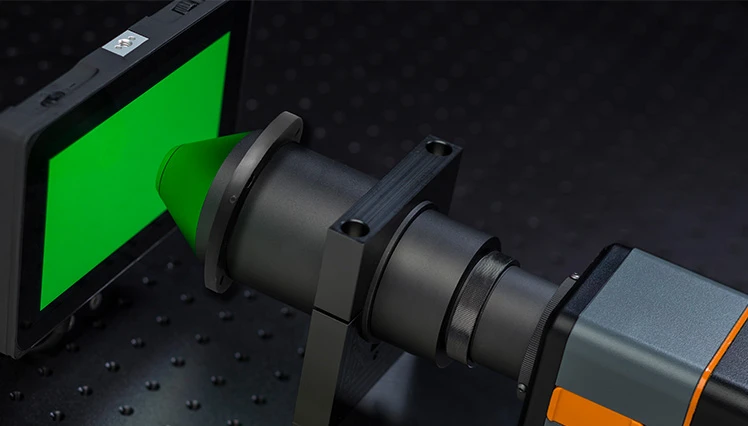Fast and Accurate Way To Measure Viewing Angle Performance of Display
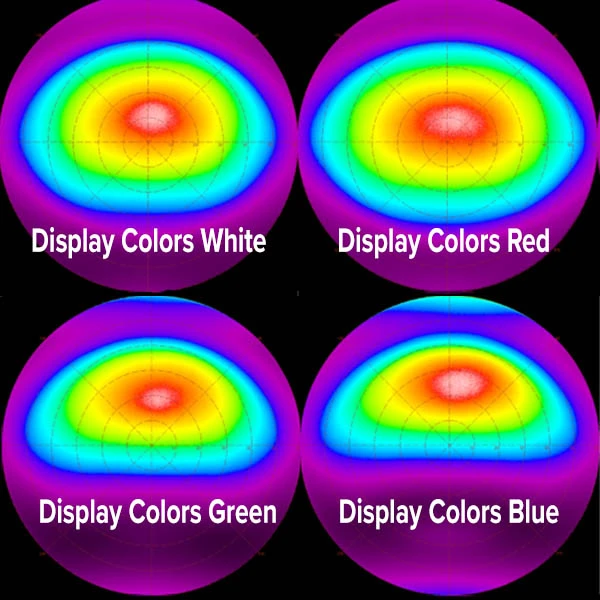
While Flat Panel Displays (FPDs) have several appealing characteristics, they do have some limitations, such as the angular emission characteristics, particularly the liquid-crystal displays (LCDs). Angular emission characteristics, or generally known as viewing angle characteristics, refers to the changes in the color, luminance, and contrast that occur with varying viewing directions. Incidentally, luminance and color are two important optical characteristics of an FPD. In the case of an active-matrix liquid-crystal display (AMLCD), these changes are usually caused by the co-alignment of liquid crystals and the technology architecture involved in creating such display.
Luminance (brightness), chromaticity (color), and luminance contrast (ratio) are the three parameters used to evaluate a display viewing angle performance. The conventional method used to measure these parameters is known as the goniometric method. With the goniometric approach, a probe or a spot luminance meter/spectroradiometer is positioned at different angles with respect to the display. While the test patterns and data analysis depend on the metric required, the number of measured viewing directions could range from a few to many, along the horizontal, vertical, and oblique directions or in the whole angular viewing space (2 to 6-axes).
The scanning of the complete display viewing field is carried out by either moving the detector or the display under test, depending on the size of the display panel. The main parameters which control the performances of such a system are the angular aperture of the detector and its distance to the display surface.
The goniometer is generally considered as the reference equipment for viewing angle performance measurement. However, the downside is that it is relatively time-consuming, especially when more measurement directions are required.
Introduction of Fourier-optics Method (Conoscope Lens)
The Fourier-optics method involves using an array detector like a charge-coupled device (CCD) imaging sensor to capture all range of viewing angles in one image through a conoscope lens. The conoscope lens uses the Fourier optics that can map an emitting spot to the measurement system’s CCD. This allows each pixel to correspond to a different emission angle. Since the entire visible “cone” of angular light rays is captured on a single focal plane (CCD sensor in a camera), no rotation of the detector or display unit is required.
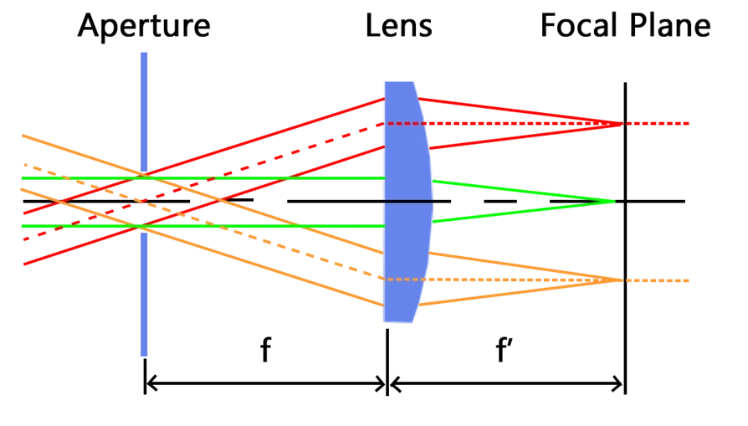
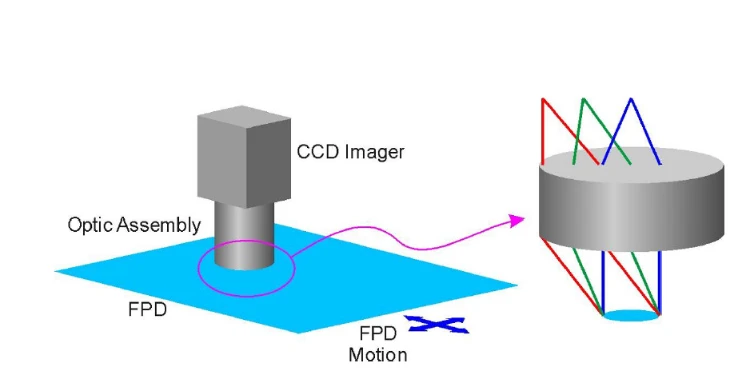
The Fourier-optics method has become popular in the display industry. It can fully characterize the viewing angle performance of a display device with a single acquisition of the CCD sensor in just a few minutes. Also, it is more affordable as compared to a fully automated goniometric system.
What Measurement Solutions Can Konica Minolta Offer?
Radiant Vision System, a Konica Minolta company, with its second-generation FPD Conoscope Lens, enables a comprehensive view angle performance evaluation with its high-resolution photopic measurements of the angular light emitted from flat panel displays (e.g., OLED and LCD) and display components (e.g., Backlight unit). The FPD Conoscope Lens is ideal for both in-line production quality control and R&D projects. It provides fast and accurate measurement by capturing a full cone of view angle data in a single measurement to ±70 degrees (with an angular resolution of 0.05 degrees per sensor pixel). This angular range allows manufacturers to evaluate displays across the common scope of user viewing positions.
The measurements from the Radiant Conoscope Lens system are visualized using two types of plots as shown below:
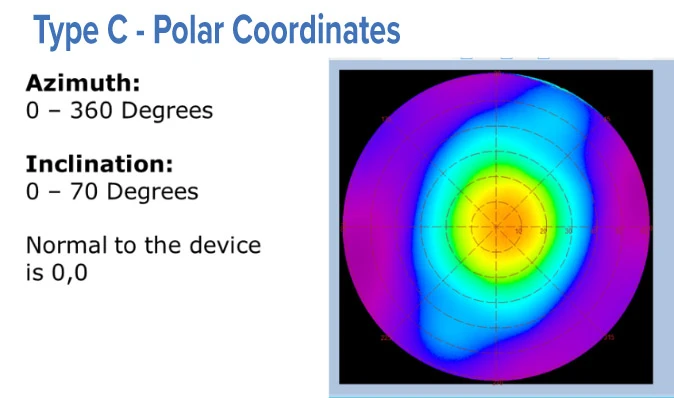
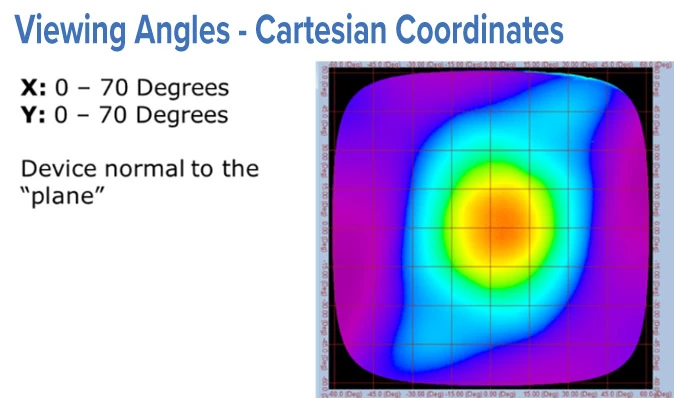
The angular contrast ratio profile is computed by combining the viewing angle plots for the maximum (white state) and minimum grey level (black state).
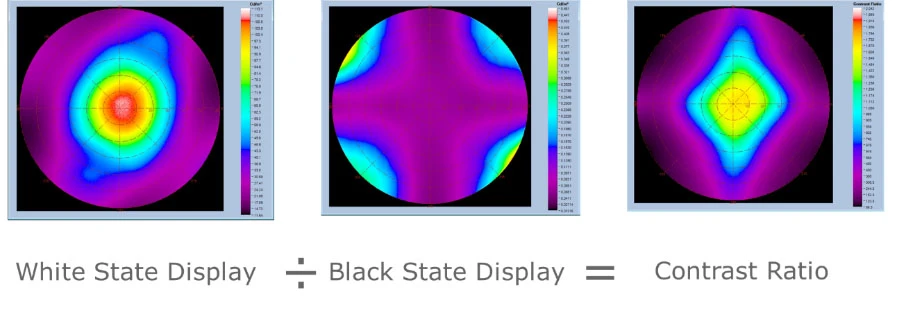
The key advantage of using the Radiant’s solution is its versatility to switch the conoscope lens for other lenses to utilize the photometer or colorimeter for other detailed light & color uniformity and pixel-level defect inspection.
To find out more about the Radiant FPD Conoscope Lens, you can download the spec sheet or check out this webinar which addresses the complex view angle challenges (e.g., OLED color consistency and defects in embedded displays) and demonstrates the versatility of the Radiant’s solution that is capable of integrating into R&D labs and production lines with minimal setup and configuration.
Need help testing your display? Talk to our application specialists and let us assist you.

